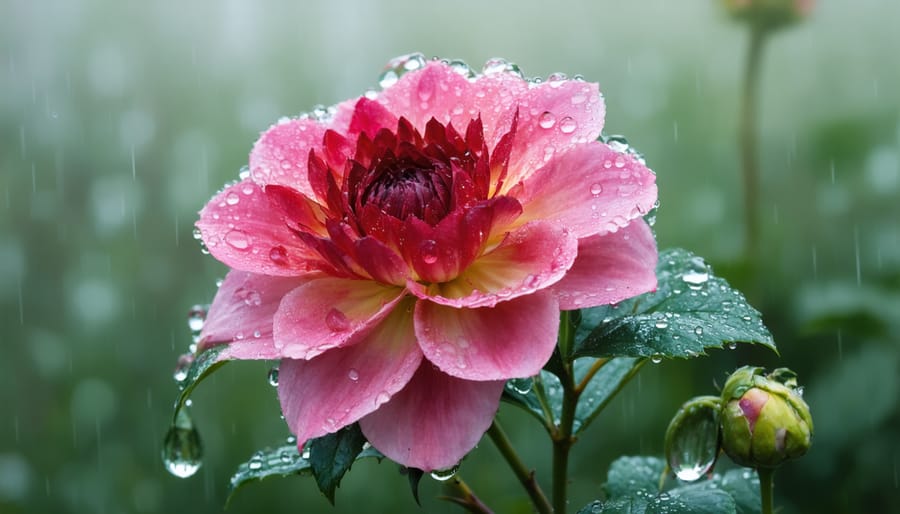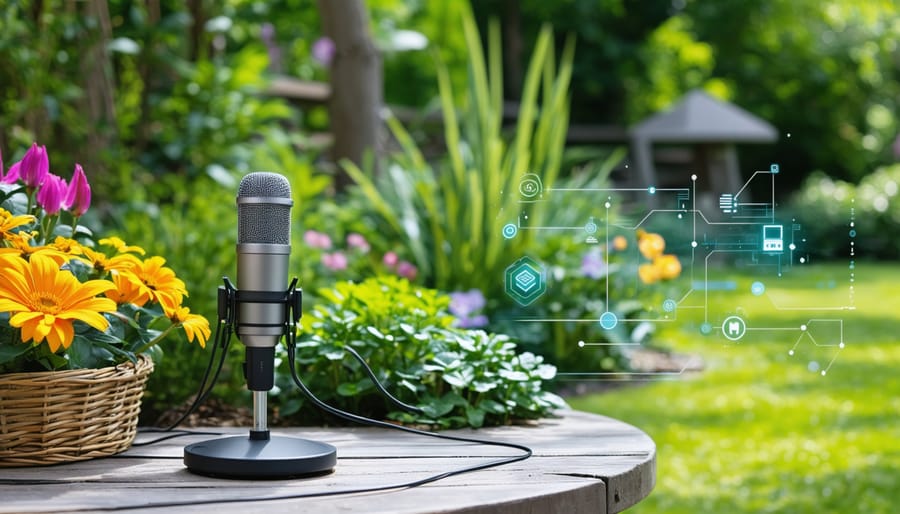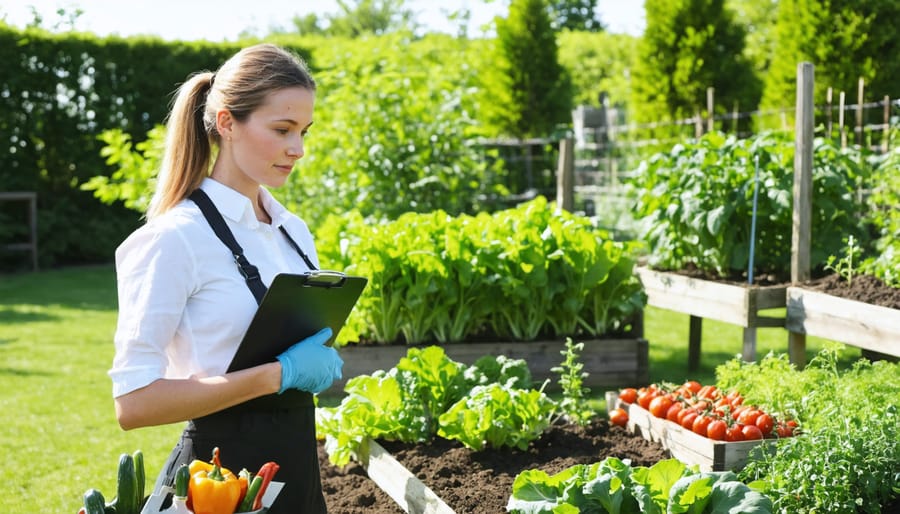Transform rainy days into extraordinary photo opportunities by mastering weather-sealed camera techniques and specialized gear protection. While most photographers pack away their equipment when storms approach, rain creates magical conditions for capturing stunning flower garden photos – from glistening droplets on petals to ethereal fog effects and dramatic cloud formations. Protect your gear with a quality rain cover and microfiber cloths, then leverage the unique lighting conditions that overcast skies provide. The diffused light eliminates harsh shadows, while water droplets add sparkle and dimension to every shot. Whether you’re photographing rain-kissed roses or misty morning landscapes, these challenging conditions often produce the most memorable and atmospheric garden images. Learn to embrace the rain’s creative potential while keeping your equipment safe and functional.
Essential Gear Protection for Rainy Garden Photography
Waterproof Camera Covers and DIY Solutions
Keeping your camera dry during rainy photo shoots doesn’t have to break the bank. Professional rain covers offer excellent protection, with options ranging from clear plastic shells to more sophisticated designs with lens accommodations. Popular brands like Think Tank and Op/Tech provide reliable protection, though they can be a bit pricey for occasional use.
For budget-friendly alternatives, consider these DIY solutions that many garden photographers swear by. A large clear plastic bag with a hole cut for your lens can work wonderfully – just secure it with a rubber band around the lens hood. Another clever trick is using a shower cap from a hotel room; they’re perfectly sized for most DSLR cameras and have elastic edges that create a snug fit.
For added protection, carry a microfiber cloth to wipe away water droplets and consider using an umbrella holder that attaches to your tripod. Remember to keep some silica gel packets in your camera bag to combat humidity. While these solutions might not look as professional as commercial covers, they’re effective at protecting your equipment while you capture those magical rainy garden moments.

Must-Have Accessories for Wet Weather Shooting
When photographing your garden in wet conditions, having the right accessories can make all the difference. Start with a good supply of microfiber lens cloths – keep several on hand as they’ll get damp quickly. A rain cover or camera sleeve is essential; look for one that’s transparent and allows easy access to your camera controls while keeping your equipment dry.
A sturdy umbrella holder that attaches to your tripod is worth its weight in gold, freeing up both hands for photography. Consider investing in weather-sealed lenses if you plan to shoot in the rain frequently. While more expensive, they provide peace of mind when capturing those misty morning garden scenes.
Don’t forget silica gel packets to combat humidity in your camera bag, and a plastic bag large enough to wrap around your gear when moving between locations. A lens hood isn’t just for sun – it helps keep raindrops off your lens. Finally, pack a small towel and an anti-fog solution for your lens; moisture can create unwanted condensation that ruins perfect shots of rain-kissed flowers and foliage.
Capturing Magic in Wet Weather
Camera Settings for Rainy Conditions
Getting the right camera settings in rainy conditions can make a world of difference in capturing those magical garden moments. Start by adjusting your ISO to a slightly higher setting (around 400-800) to compensate for the lower light typically present during rainy weather. Keep your aperture relatively wide (f/4 to f/5.6) to let in more light while maintaining good depth of field for your garden subjects.
For exposure, it’s best to slightly underexpose your shots (by about -0.3 to -0.7 stops) to prevent the bright water droplets from becoming overexposed. Use spot metering to ensure your main subject is properly exposed, especially when photographing flowers or plants against a misty background.
White balance can be tricky in wet conditions, as rain often creates a cooler, bluer atmosphere. Try setting your white balance to “cloudy” or “shade” to add a touch of warmth to your images. If you’re comfortable shooting in manual mode, a shutter speed of at least 1/125th of a second will help you freeze raindrops and capture their beautiful patterns on leaves and petals.
Remember to check your focus points regularly, as water droplets can sometimes confuse your camera’s autofocus system. Using single-point autofocus gives you more control over exactly what your camera focuses on.
Working with Natural Light in the Rain
Rainy days offer unique opportunities for capturing stunning garden photos, but working with natural light requires some special consideration. While overcast conditions can provide soft, diffuse lighting that’s perfect for highlighting subtle details in plants and flowers, the varying light levels during rainfall demand attention to your natural light photography techniques.
Watch for breaks in the clouds, which can create dramatic spotlighting effects on wet foliage. These moments are perfect for capturing the sparkle of raindrops on leaves or the gentle bow of flower petals under the weight of water. During steady rain, position yourself so that any available light illuminates your subject from the side or slightly behind, creating a lovely glow through translucent petals and leaves.
Consider timing your photo session during the “golden hour” just after rainfall, when the sun begins to peek through the clouds. This combination of wet surfaces and warm light can create magical effects in your garden photos. If you’re shooting during heavier cloud cover, try increasing your ISO slightly to maintain faster shutter speeds, but be mindful of noise in your images.
Creative Effects with Water Droplets
Water droplets can transform ordinary garden photos into magical captures, especially when photographing flowers and leaves after rain. Position yourself close to your subject and look for droplets that catch the light – these create natural magnifying effects that can reveal intricate details within the flower or leaf. For striking compositions, try focusing on a single large droplet with the rest of the garden creating a soft, blurred backdrop.
Early morning is perfect for droplet photography, as dew provides pristine water beads before they evaporate. If you’re shooting on a cloudy day, try using a macro lens or close-up filter to capture the delicate texture of water drops. For added drama, position yourself so that backlight shines through the droplets, creating beautiful sparkles and rainbow effects.
Don’t forget to experiment with different angles – sometimes shooting from below can show droplets suspended from petals or leaves, creating fascinating transparent spheres. If it’s not raining, you can recreate this effect using a spray bottle filled with clean water, giving you more control over droplet placement and size.
Remember to stabilize your camera, as these close-up shots require perfect stillness to capture sharp details. A tripod is ideal, but you can also steady your camera against a garden stake or fence if needed.

Best Subjects for Rainy Garden Photography
Flowers and Foliage After Rain
After a rain shower, your garden transforms into a magical photography playground, with water droplets adorning petals and leaves like tiny crystal jewels. To capture perfect flower shots in these conditions, position yourself at eye level with your subject and look for flowers with robust petals that hold water droplets well, such as roses, dahlias, or hostas.
Try shooting from different angles to catch how light plays with the water drops. Early morning or late afternoon light works beautifully, creating sparkles and rainbow effects in the droplets. Get close to your subject – macro photography really shines here, revealing intricate details in both the plants and water formations.
For the most striking images, focus on contrast. Dark green leaves with water beads can create dramatic effects, while colorful blooms against darker backgrounds make the water droplets stand out brilliantly. Don’t forget to look for interesting patterns in how the water collects on different leaf surfaces – some plants create perfect spheres of water, while others form fascinating rivulets.
Keep your camera steady and use a slightly faster shutter speed than usual to freeze those droplets in place. A gentle breeze can add movement to your shots, but wait for moments of stillness to capture the clearest details. Remember to protect your gear with a rain cover or umbrella while you work, and keep a microfiber cloth handy to wipe any stray drops from your lens.
Garden Structures in Wet Weather
Rainy weather transforms garden structures into magical focal points for photography. Water droplets clinging to a wooden bench create an intimate portrait of your garden’s personality, while wet stepping stones lead the eye through mysterious, glistening pathways. To capture these moments, position yourself at different angles – try getting low to the ground to photograph raindrops bouncing off garden paths, or shoot through rain-streaked arbors to frame distant garden features.
Decorative elements like bird baths, sundials, and metal sculptures take on new life in wet weather. The reflective surfaces of rain-soaked materials add depth and interest to your images. Consider photographing ornamental gates or trellises with climbing plants, as water droplets on leaves and metalwork create beautiful natural patterns.
For the best results, wait for breaks in the rainfall when there’s still plenty of moisture but less active precipitation. This allows you to capture the ethereal atmosphere without battling heavy rain. Early morning or late afternoon light works particularly well, creating subtle highlights on wet surfaces and enhancing the mood of your garden structures.
Don’t forget to look for unexpected compositions – a rain chain directing water into a collection barrel, or raindrops cascading off the edge of a pergola can make for stunning close-up shots. Remember to protect your camera while moving between sheltered spots, and take advantage of covered areas like gazebos to frame your shots while staying dry.

Safety and Practical Considerations
Safety should always be your top priority when photographing in wet conditions. Keep an eye on weather forecasts and avoid shooting during thunderstorms or severe weather conditions. Stay away from metal tripods during lightning, and ensure you have stable footing on wet surfaces to prevent slips and falls.
Choose appropriate footwear with good grip, and consider wearing waterproof clothing to stay comfortable and dry. Keep a small towel handy to wipe your hands and equipment, and remember to protect yourself from getting chilled – wet conditions can quickly lower your body temperature.
When it comes to practical considerations, always carry spare batteries in a waterproof container, as cold and wet conditions can drain them faster. Have multiple microfiber cloths ready to wipe your lens, and consider using an umbrella holder that attaches to your tripod, freeing up your hands for shooting.
After your session, thoroughly dry all equipment and check for any moisture that might have sneaked in. It’s also wise to keep silica gel packets in your camera bag to absorb excess moisture during storage.
Rainy weather presents a unique opportunity to capture the enchanting beauty of your garden in a whole new light. With the right preparation and techniques, you can create stunning photographs that showcase glistening droplets, moody atmospheres, and vibrant colors enhanced by wet conditions. Don’t let a little rain keep you indoors – embrace these moments to develop your photography skills and capture the magical transformation of your garden space. Remember to protect your equipment, be patient with your shots, and most importantly, enjoy the creative process of photographing nature’s watery display.




